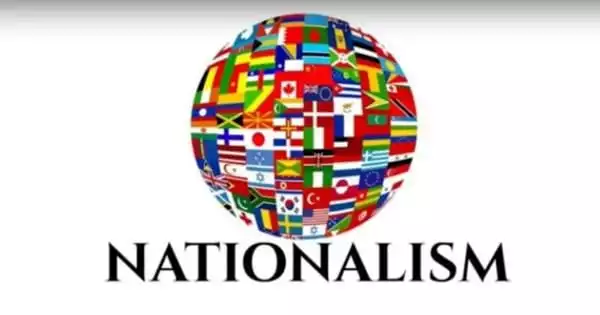Proper infrastructure is the foundation for an economy’s rapid development. Infrastructure development necessitates expansion, technological modernization, and scientific fine-tuning. Our country requires better roads, better transportation facilities, better railway reliability, more telecommunication linkage, better port facilities, better and sufficient power supply, planned urbanization, housing, and, particularly in rural areas, the basic infrastructure of road, power supply, education, and water, among other things.
India has a population of one billion people, with 70% living in rural areas. It’s odd that even after fifty-six years of independence, the shape and form of the rural sector haven’t changed in the long run. Many of the problems that metro cities face are the result of a lack of infrastructure and job opportunities in rural areas. The growing number of slum areas in cities is the result of the rural population’s inability to find work.
Despite significant progress made by the country in various fields such as communication, manufacturing, industrial segment, space technology, information technology, and rural sector, there has been no significant progress in the rural sector. Since then, planning has been oriented toward the development of infrastructure in cities and industrial areas, but the rural segment has lagged far behind in terms of growth parameters.
Things are not as bleak and pessimistic as they appear. Slowly and steadily, progress is being made. Infrastructure is being built. The newly constructed expressway between Mumbai and Pune has reduced the distance and travel time from seven hours to two and a half hours. We are particularly proud of the sleek and modern international airport at Nedumbassery, near Kochi. The various flyovers being built in Delhi will help to alleviate the metro’s transportation problems.
Everything is possible with strong political will and determination. On October 14, 1998, Prime Minister Mr. Vajpayee announced the construction of North-South and East-West corridors. The National Highways Development Project was chosen by the Vajpayee government’s task force (NHDP). If completed on time, the Golden Quadrilateral (GQ) is approximately 6000 km of National Highways connecting New Delhi, Kolkata, Chennai, and Mumbai, which will solve the long-felt problem of easy and quick access between the Metros.
The North-South and East-West corridors are about 7500 kilometers long. Kashmir to Kanyakumari is approximately 4000 km long, with a spur to Kochi; Silchar to Porbander is approximately 3500 km long, with a completion date of December 31, 2007. In April 2000, the government approved several other projects, in addition to the NHDP, totaling Rs. 4000 crore, which, if completed on time and without further cost escalation, will facilitate the export/import of cargo from the hinterland.
At the 1999 price level, the total cost of NHDP is Rs. 54,000/- crore. The government is attempting to complete all NHDP projects on time. All-time high-profile road infrastructure not only saves time but also reduces fuel and vehicle maintenance costs. According to a World Bank study, at 1999 prices, the Golden Quadrilateral alone would save Rs. 8000/- crore per year.
Despite the fact that the NHDP is a positive step forward in infrastructure development, there is still much work to be done in the development of state highways and other roads. Many roads are poorly built and maintained as a result of a lack of funds and corruption at all levels. Corruption is so prevalent in all types of civil construction work that more than 40% of the funds allocated for the purpose are misappropriated by officials in collusion with the contractors.
India requires new airports in Navi Mumbai, Bangalore, Hyderabad, and Chennai, among other cities. Economic viability and feasibility studies have since been completed. The government is thinking about starting work in the joint venture. In terms of power, India requires approximately 31000 MW of power under greenfield projects by 2007. According to the Union Minister for Power, the projects are either under construction or in an advanced stage of planning, and will undoubtedly be completed within the 10th plan period.
According to the Minister, in addition to the 31000 MW addition in the 10th plan, 40,000 MW and 51,000 MW are to be added at a later stage. According to the Minister, India will require Rs.800,000 crore in investment to add another 100,000 MW of power capacity over the next few years, with the government expecting Rs. 80,000 crores from the private sector or Foreign Direct Investments (FDI).
The Indian railway system is plagued by poor infrastructure and a lack of coaches, among other issues. According to the Rakesh Mohan Committee report, “if the railway is to survive as an ongoing transportation organization, it must modernize and expand its capacity to serve the economy’s emerging needs.” Given the likelihood of receiving significant free or subsidized resources from the government, the new investment will have to be financed commercially. This is a significant challenge for India’s railways.”
According to the approach to the tenth plan, the decline in railway revenue from transportation is due to policy distortions such as overcharging freights in order to subsidize ordinary passenger fair. Furthermore, railways’ investment strategy prioritized the opening of new lines for passenger traffic while ignoring the potential for commercial traffic. Decisions are made based on political needs.
A second thought is given to the commercial angle. As a result, the railway’s financial condition has deteriorated to the point where it is unable to make investments to improve railway transportation services. Overstaffing has always been a problem in the railway industry. According to the approach paper, the goal should be to keep staff m costs, including pensions, within 45 percent of gross traffic receipts until 2010. This means that the workforce must be reduced to around 12 lakh people and maintained at that level.
The railway system is critical to national integration. Travelers of all castes and creeds are sitting together for the duration of the journey, forgetting all animosity. Railways cannot be fully commercialized, but they cannot be a financial burden on the government. Both aspects should be well-integrated.
The development of infrastructure is a fundamental requirement for the Indian economy’s rapid growth. The current administration has taken steps to improve road connectivity throughout the vast countryside. The Pradhan Mantri Gram Sadak Yojana (PMGSY), which was launched on December 25, 2000, aims to provide road connectivity to all unconnected habitats with a population of more than 1000 people by 2003, and those with a population of more than 500 people by the end of the tenth plan period, i.e., 2007. Most villages still lack access to portable water. So far, approximately Rs.35000 crore has been invested in the water supply sector.
According to official sources, the provision of a drinking water facility has completely covered 1235759 rural habitats. Since then, 166832 villages have been covered. The Pradhan Mantri Gramodaya Yojana proposes addressing water contamination issues such as fluoride, arsenic, and iron contamination.
Personal hygiene, household cleanliness, and environmental sanitation are all dependent on the families’ personal attitudes, awareness, education, and economic status. Personal hygiene, home sanitation, safe water, garbage and excreta, and wastewater disposal were all added to the definition of sanitation in 1993. Since April 1999, the program has been further restructured, with a greater emphasis on community involvement under what is known as the total sanitation campaign.
This program has provided 8777543 toilets at a cost of Rs.156917 crore since its inception in 2001. The Pradhan Mantri Gramodaya Yojana (Gramin Awaas), Credit Cumulative Subsidy Scheme for Rural Housing, and Samagra Awaas Yojana are all Centre government-sponsored schemes in the rural housing sector.
On April 1, 1999, the Swaran Jayanti Gram Swaraj agar Yojana, a comprehensive self-employment program, was launched with the goal of developing a large number of micro-enterprises for individuals, groups, or self-help groups.
Rural India is in a bad state, despite all of the rural development programs. The most difficult task is to prevent the misappropriation of funds intended for rural development. With corruption becoming an integral part of governance from the panchayat level upwards, the true impact of various rural development schemes is unknown. A nexus between Babus’ politicians and contractors steals more than 60% of the funds intended for development.
If the funds intended to develop the rural segment had been used for their intended purpose, the Indian economy might have grown to reflect a more prosperous state. The government’s efforts to develop infrastructure in rural areas must be bolstered further. The pace of growth in the Indian economy cannot be accelerated in the absence of adequate infrastructure.
Infrastructure does not simply refer to the development of roads, railways, air traffic, and power, among other things. It would be a mistake to ignore any single component of economic or social infrastructure. They are mutually beneficial. Infrastructure development necessitates the participation of not only government agencies, but also the private sector, non-governmental organizations, and the general public. How can we think of erecting an edifice of economic growth without the necessary infrastructure?
















